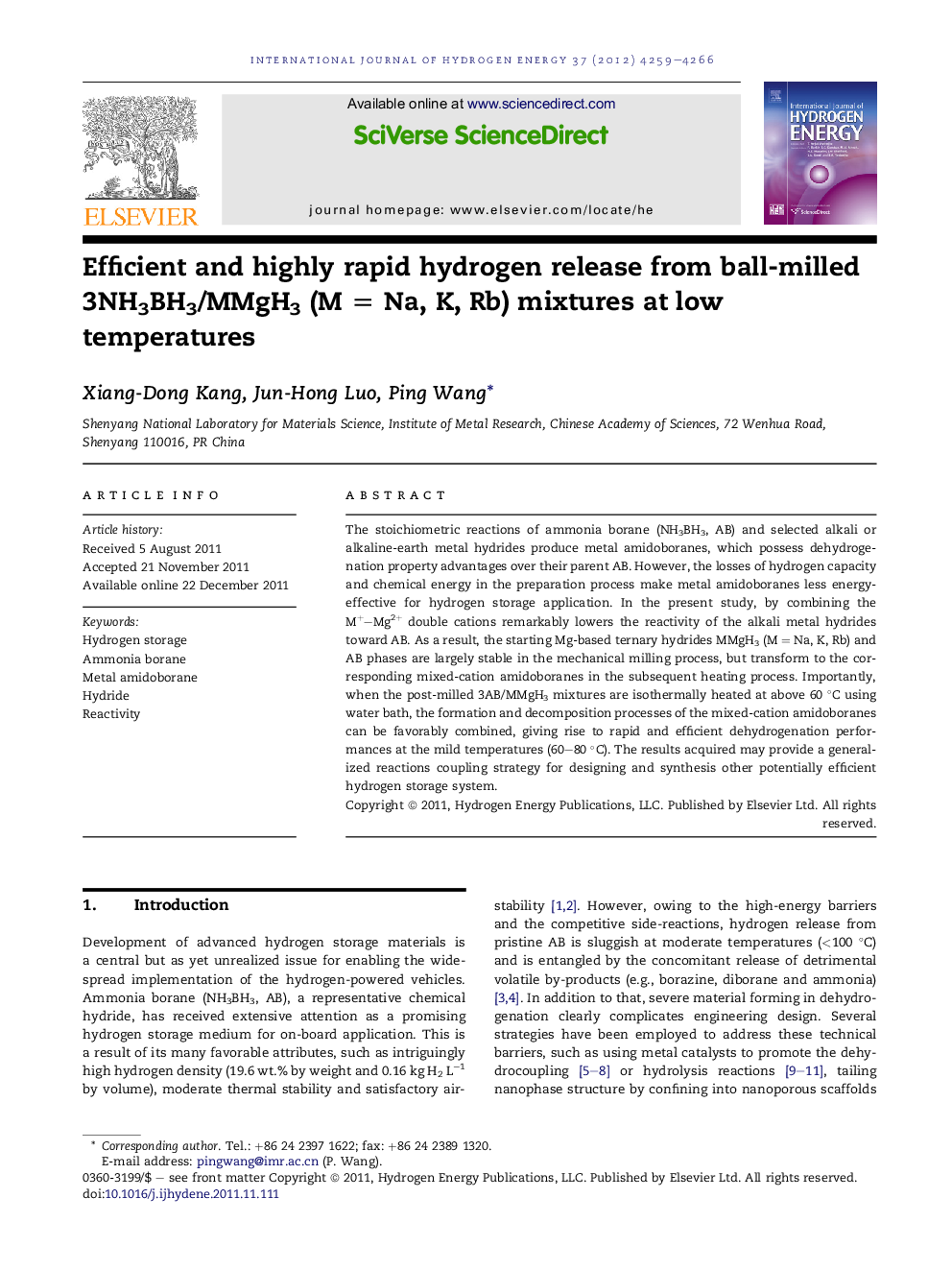| Article ID | Journal | Published Year | Pages | File Type |
|---|---|---|---|---|
| 1275481 | International Journal of Hydrogen Energy | 2012 | 8 Pages |
The stoichiometric reactions of ammonia borane (NH3BH3, AB) and selected alkali or alkaline-earth metal hydrides produce metal amidoboranes, which possess dehydrogenation property advantages over their parent AB. However, the losses of hydrogen capacity and chemical energy in the preparation process make metal amidoboranes less energy-effective for hydrogen storage application. In the present study, by combining the M+–Mg2+ double cations remarkably lowers the reactivity of the alkali metal hydrides toward AB. As a result, the starting Mg-based ternary hydrides MMgH3 (M = Na, K, Rb) and AB phases are largely stable in the mechanical milling process, but transform to the corresponding mixed-cation amidoboranes in the subsequent heating process. Importantly, when the post-milled 3AB/MMgH3 mixtures are isothermally heated at above 60 °C using water bath, the formation and decomposition processes of the mixed-cation amidoboranes can be favorably combined, giving rise to rapid and efficient dehydrogenation performances at the mild temperatures (60–80 °C). The results acquired may provide a generalized reactions coupling strategy for designing and synthesis other potentially efficient hydrogen storage system.
► Reactivity of alkali metal hydrides toward AB has been successfully tuned by combining double cations. ► The formation and decomposition processes of the mixed alkali and Mg metal amidoboranes have been favorably combined by properly controllable heating conditions. ► The fastest hydrogen release in the temperature ranges of 60–80 °C was reported. ► A generalized reactions coupling strategy for designing and synthesis efficient hydrogen storage system was proposed.
